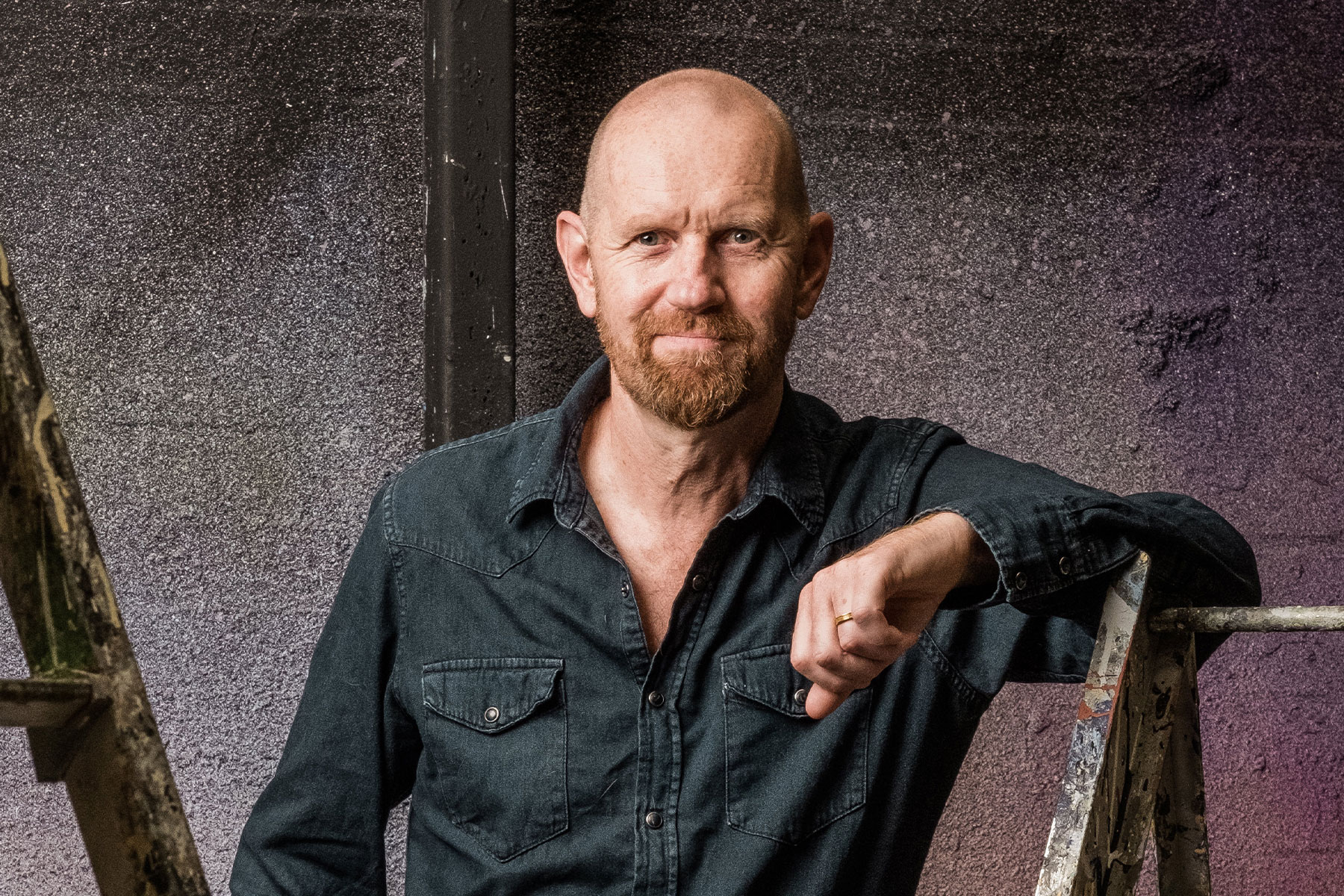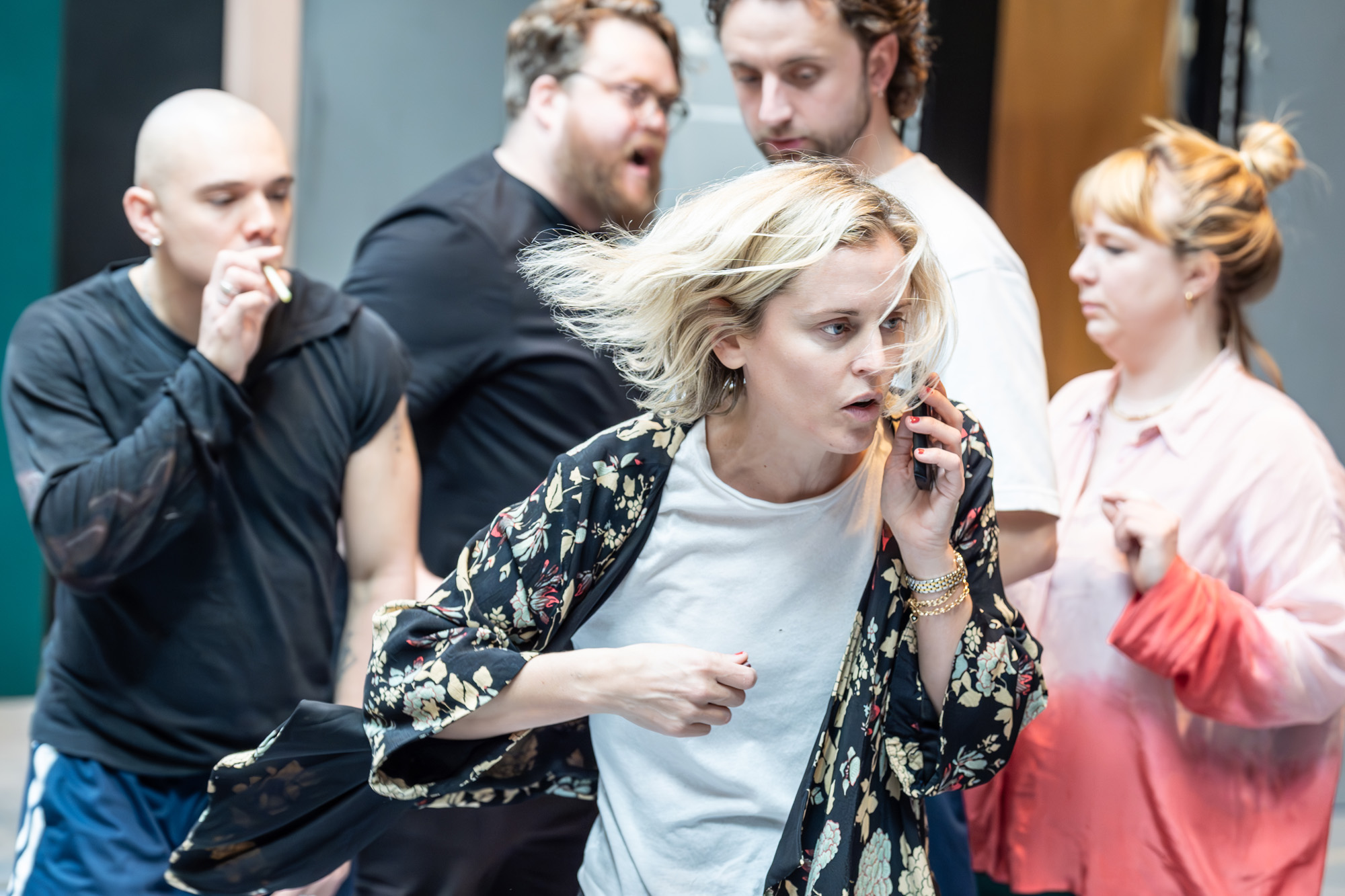A Woman Killed With Kindness’ Paul Ready On … Katie Mitchell’s Process
Actor Paul Ready is currently appearing in A Woman Killed With Kindness, directed by Katie Mitchell at the National’s Lyttelton Theatre. It’s Ready’s seventh production with Mitchell, a director renowned for her detailed processes and her ability to often polarise audiences.
Ready’s earlier productions with Mitchell were Forty Winks and Wastwater at the Royal Court, and at the National, Attempts on Her Life and two runs of Mitchell’s adaptation of Virginia Woolf’s Waves. He was also an artistic associate on …some trace of her, the multimedia piece based on Dostoyevsky’s The Idiot.
Ready’s many other stage credits include London Assurance, Time and the Conways, Major Barbara, Saint Joan and Mother Clapp’s Molly House (National), Terrorism, Crazyblackmuthaf***ingself (Royal Court), World Music (Donmar), Romance (Almeida) and One Flew Over the Cuckoo’s Nest (West End).
In A Woman Killed With Kindness, Thomas Heywood’s 17th-century domestic thriller, two women fight for survival in a rural wilderness dominated by men, money and an unbending morality. The cast also includes Kate Duchene, Sandy McDade, Liz White and Gawn Grainger.
I’ve worked with Katie Mitchell six times, more than with any other director. The first production was Forty Winks by Kevin Elyot at the Royal Court, followed by Waves, Attempts on Her Life and Waves again at the National, and then there was Wastwater back at the Royal Court. And I suppose I was also an artistic associate on …some trace of her, the multimedia piece based on Dostoyevsky’s The Idiot.
With Katie, I know that every time I arrive at rehearsals I’m going to be challenged. The bar is set really high so you’re always on your toes. At no point can you relax. I like the depths that she goes to in her work. She demands acute observation of how humans interact and application of that observation to the characters.
In a play like A Woman Killed with Kindness, the text is the last thing you come to. First you have to isolate what the themes are. Then, Katie does this thing called “slice of life”, where you find a piece of your life that correlates to a theme or a moment in the play. The themes Katie finds are often very dark; for example, a theme in the play might be unhappiness in love, and so you find a piece of your life when you’ve dealt with that.
It has to be a piece of your life that you’ve already dealt with emotionally so that you can now look at it objectively. Then you cast the slice of life from the actors in the company and play that out as a scene as the other people in the room observe what happens. If someone is nervous when they’re telling their story and they’re tapping their leg, for instance, that’s the kind of physical giveaway that we look for.
At the same time, you’re working on a visual biography of your character, and the clues to that biography lie within the text. When we talk about things from our own pasts, there are always pictures in our head, our memories, that represent our perception of what happened, what we’re talking about. When we flesh out the characters, we act out incidents from their biographies that are referred to so we have a memory of those too.
There’s also a lot of other research, lots of homework. A Woman Killed with Kindness is an early domestic tragedy. My character is an upper middle-class landowner and farmer in our version. He tries to live a moral life. The play follows the unravelling of his marriage and contrasts his wife and another woman, and how they survive in a world dominated by men. The play was written in the 1600s, but we’ve updated this production to 1919, which is quite late in terms of development of women’s rights and such.
The amount of information I’ve needed in order to flesh out this character was substantial. The main challenge at the beginning was discerning simply what his day-to-day life is like, how much land does he own, what is his business like, all of that. The research really all pertains to the place of masculinity in the domestic world from the Victorian period and how that has changed.
But the biggest challenge was the text itself. It’s from the early 17th century so it’s very complex language, which is harder to digest and harder to learn. Katie loves improvisation so we do it a lot – as in, we improvise what happens in a scene using our own words before we act it out using the scripted words. I’ve never had to do that with a classic text like this one. But the benefit of doing it is that you kind of own the words, and you reduce that distance between this “classical text” and your everyday speech.
Katie’s process is very detailed so we do usually have longer in rehearsal than you get with other productions – but, no matter what, you always seem to run out of time. That just happens. Another thing that I really like about Katie’s philosophy is that you’re always aiming for the last night. So, rather than thinking you have the finished product before opening, it’s a recognition that the play evolves in stages during the run. It means we can never get complacent in a role.
Talking about Katie’s process and the play, I always feel like I’ve only scratched the surface of what it is. I find it quite difficult to explain. Katie is an extremely precise director with a particular integrity. She never compromises on that. But at the same time, her rehearsals are actually very free and nurturing. You feel safe within this extremely challenging, improvising world. She allows you to be unafraid of trying anything.
A Woman Killed with Kindness opened on 19 July 2011 (previews from 12 July) at the National’s Lyttelton Theatre, where it continues in rep until 11 September.










